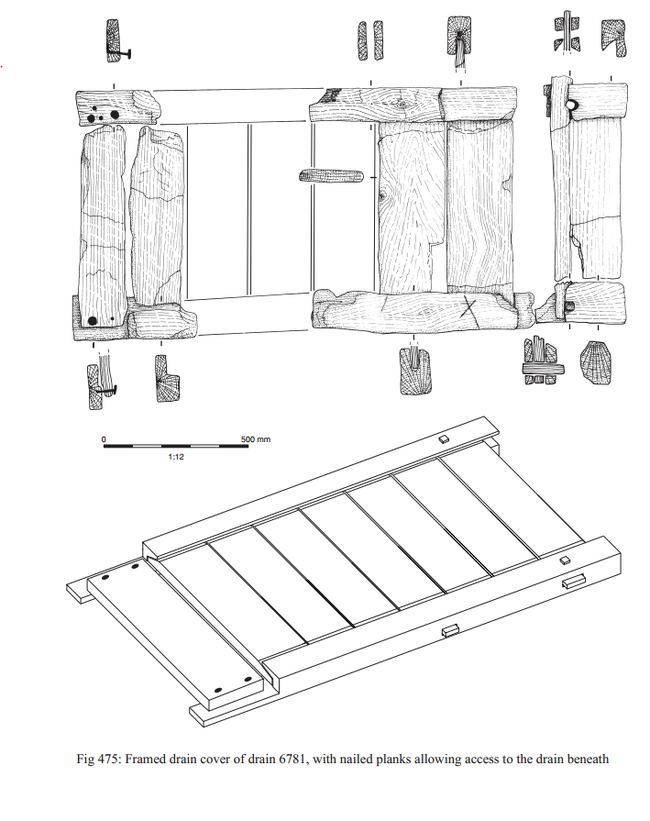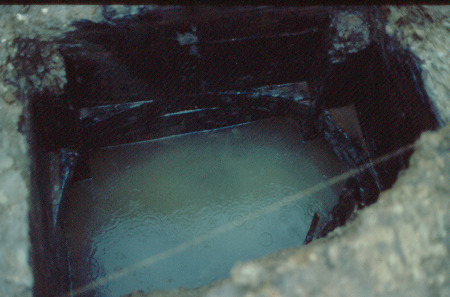Roman
1. The Roman Villa at Great Holts Farm
2. The Carlisle Millennium Excavation
3. The Roman Settlement at Scole
1. The Roman Villa at Great Holts Farm
During the excavation of a roman villa in Essex, a well was
discovered. A wooden well lining and wooden objects from inside the
well pit were recovered. The lining forms a square bottomless box
that was made from sawn planks of oak, joined with dovetail joints
and no nails. The oak pieces within the well appear to be offcuts
from other building work.
Darrah, R., Wood (2003). In Germany, M., Excavations at Great
Holts Farm, Boreham, Essex, 1992-94. Essex County Council, 2003.
pp.182-190
http://www.oxbowbooks.com/oxbow/catalogsearch/result/?q=Excavations+at+Great+Holts+Farm
2. The Carlisle Millennium Excavation
This excavation was funded by Carlisle City Council, The Millennium Commission and local businesses during 1998-2001. Richard evaluated 535 worked timbers from the excavation of a roman fort. These timbers had been stored
since the excavation in 2000 and were examined in 2003. The report considered the source
of the timber preparation and
building techniques used. Findings were compared to those of other
roman forts of the same era.
The fort was rebuilt several times. The first fort was built from
alder and ash, later forts were predominantly built from oak. The
timber was prepared by splitting in the early forts and saws were
used later. The lack of regularity of the post-spacings and in the sizes of the posts used were notable in these military buildings. The type of timber used varied from non-durable alder and ash roundwood (less than 15cm diameter) to oak trees of over 1m diameter (and over 300 years old when felled). The latter had been split radially and tangentially into squared timbers of less than 15cm square.

Roman man-hole cover from Carlisle (Darrah R, chapter 19 below).
Darrah R. The structural wood and other wooden artefacts: the structural wood. Chapter 19. In: Howard-Davis C (2010). Carlisle Millennium Project - Excavations in Carlisle 1998-2001, Volume 2 Finds. Lancaster Imprints no. 15. Oxford, Oxford Archaeology North.
Darrah R. Appendix 9, The wood. In: Howard-Davis C (2010). Carlisle Millennium Project - Excavations in Carlisle 1998-2001, Volume 3 Appendices. Lancaster Imprints no. 15. Oxford, Oxford Archaeology North.
Zant JM (2009). Carlisle Millennium Project - Excavations in Carlisle 1998-2001, Volume 1 Stratigraphy. Lancaster Imprints no. 14. Oxford, Oxford Archaeology North.
Richard reported the results of the work at a conference: Darrah R. Timber in the construction of military buildings in Carlisle. CARLISLE MILLENNIUM PROJECT CONFERENCE, 15 to 17 October 2004, Swallow Hotel, London Road, Carlisle.
Carlisle Millenium Project website
3. The Roman Settlement at Scole
There is a large roman settlement at Scole, containing waterlogged timbers which have been preserved. Much information can be gained from this timber about the timber source, felling, conversion techniques, tools and joints. Oak appears to have been the timber of choice; despite the quality of the oak dropping in later centuries. This suggests that by the end of the 2nd century there were no longer supplies of slow-grown timber. The main tools used were the axe, adze and saw. Early timbers were produced by splitting, while later timbers were sawn, except at the edge of the settlement where splitting continued to be used. In regards to joints, the techniques used have been chosen to minimize the need for nails. As well as normal woodworking there was evidence of coopering (of casks and tubs) on the site.
Ashwin T, Tester A (eds) A Roman Settlement in the Waveney Valley: excavations at Scole 1993 -94. East Anglian Archaeology.
About to be published: ISBN nyk; Part 1 270pp with Part 2 on CD, 258 illustrations

The Roman well at Scole. Photo source unknown.
